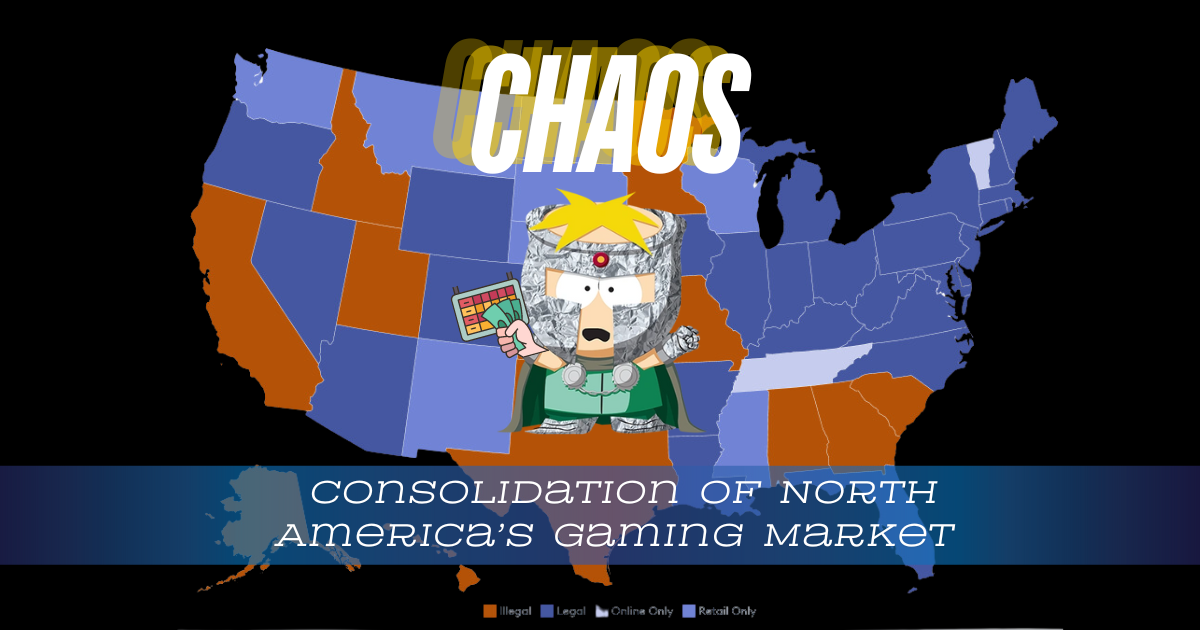New industries are often described as “chaotic” and the North American Gaming market has been no different in its description by many. But is that label accurate? Does that description of chaos hold now that we have entered a period of consolidation? Before a strategy for navigation can be set, understanding the correct environment and its rules remains the most important question to solve.
Underneath the “utter confusion or disorder” definition sit a few basic principles of chaos:
- Extreme sensitivity to initial conditions
- Cause and effect are NOT proportional
- Nonlinearity
All which are somewhat tied together and bend an event or environment towards indeterminism, or pure chance. There are, of course, other tenants here but without going down the rabbit hole of indeterminism versus determinism and LaPlace’s Demon, those three will be the basis for the North American Gaming market.
To put it more simply, true “chaos” means outcomes are independent of actions.
With the repeal of PASBA, 2018 “generally” serves as the start of mobile gaming in the United States. Ah yes, the Wild West. Six years and approximately 40 legalized sports betting states later, recent M&A news and a flurry of sportsbook operators shuttering most of or all of their North American operations, have left many believing we are fully in the consolidation phase. But is it “still” chaos?
Most industry experts have predicted this consolidation phase for at least a couple of years now.
“Knowing” what lies ahead based on existing conditions of today (in this case years past), suggests the extreme sensitivity causing unpredictable actions and outcomes is not supported. Extreme sensitivity to initial conditions, also known as “the butterfly effect”, is a property of complex, dynamic systems that can lead to unpredictable behavior. It refers to how a system’s starting configuration, or initial conditions, can significantly impact its future states. In other words, even a small change to the current trajectory can result in very different future behavior.
Looking back from the vantage of the current consolidation phase, are there visible proportional effects? As states opened up sports betting the fragmented nature of regulation, customer acquisition cost through marketing spend, and tax rates set a high barrier to entry and an even higher barrier for continuation. Are the causes proportional to the effects? It appears they are.
So could this “chaotic” environment be solved and navigated? It also appears it could, otherwise the market “winners” like Fanduel, Draftkings, etc. of the North American market could not have been predicted. It is still very early in the betting market in North America, so this is subject to change, especially with the catch up adoption of iGaming, less than 10 states versus sports betting 38 states. The catching up adoption of iGaming, presents a new variable and dynamic to this North American gaming industry. But that is a different topic for a different day.
So where does the current North American Gaming industry fall in the whirlwind of the consolidation phase? It’s not chaos. Even the Wild West does not meet the criteria of chaos above. In fact, very few things do.
So if it’s not chaos that defines this industry the real question is what’s next? Earnings season… That’s what.
Click here to read last week’s SCALER.
Click here to read The Potential Domino Effect Of A Sports Betting Patent Lawsuit.

